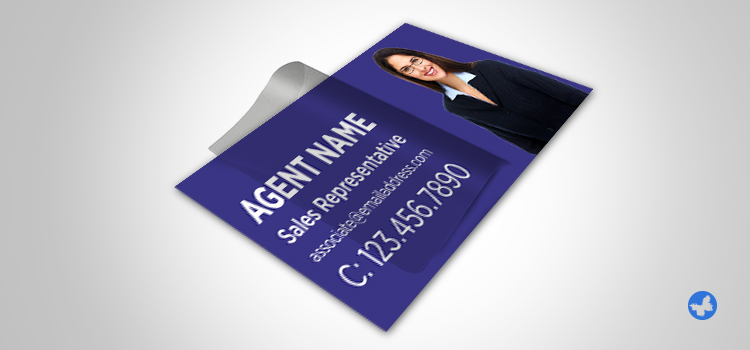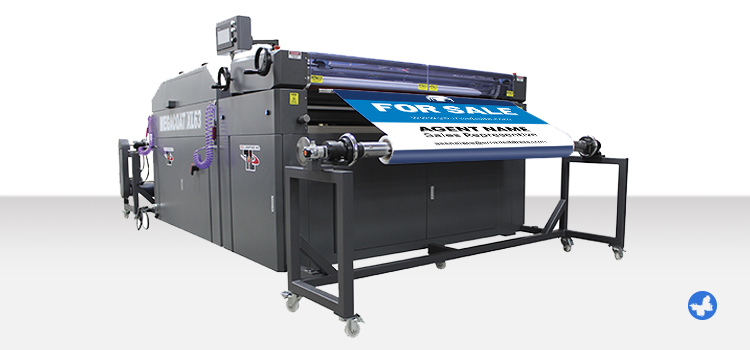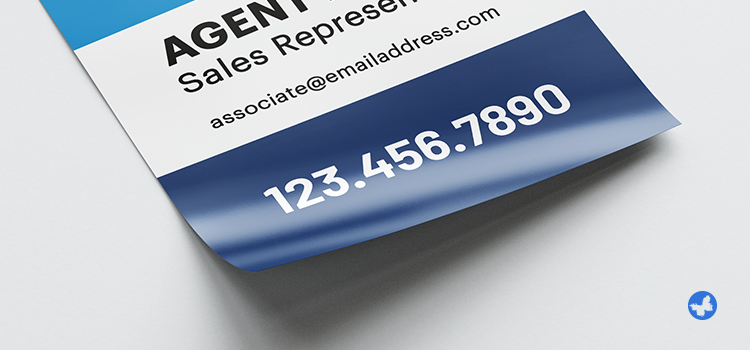If you are a real estate agent, you know how important it is to have eye-catching and durable signs for your listings. Real estate signs are a powerful way to attract potential buyers, showcase your brand, and communicate important information. But how should you choose the best finish for your signs?
In this article, we’ll dive into the comparison of dry-erase film vs. UV liquid lamination, two of the most popular finishing options available today. We will explain what they are, how they work, and what their pros and cons are. By the end of this article, you can make an informed decision on which option suits your needs and budget. Stay tuned for our expert advice!
Read More: Common Sizes of Real Estate Signs
Dry-Erase Film vs. UV Liquid Lamination: What’s the Difference?
When it comes to putting the final touch on your real estate signage, the finish you choose is crucial. It can determine the sign’s longevity, how easy it is to use, and how it looks. We will explore two popular options today—the dry-erase film and UV liquid lamination.
What Is Dry-Erase Film, and How Does It Work?

The dry-erase film is a versatile finish that acts as a protective covering for your signs. A thin layer, or ‘film,’ is applied on top of your sign. This film enables you to write or draw on the surface without leaving any permanent marks. If you’re familiar with using a whiteboard, you will understand how this works. This option is particularly beneficial for signs that require frequent updates or changes.
You can easily sketch notes or important pointers on the sign, and when they are no longer needed, you can simply erase them without worrying about damaging the sign. This feature allows for flexibility and adaptability, making the dry-erase film an excellent choice for dynamic signage needs.
Benefits of Using Dry-Erase Film for Real Estate Signs
Dry-erase film on real estate signs essentially provides a combination of cost savings, flexibility, and a polished appearance, enabling real estate professionals to effortlessly modify their messaging and uphold a polished brand image. Real estate signs made with dry-erase film have a number of benefits that make them a more flexible and affordable marketing tool. This finish allows the sign’s message to be updated frequently without requiring a new sign to be printed each time.
Dry-erase film reduces advertising expenses by removing the need for frequent sign reprinting. When combined with branding and unique graphics, dry-erase films provide a neat and professional look. A lot of dry-erase films are stain- and scratch-resistant, so even after frequent use, the sign will remain in good shape. Some are appropriate for outdoor use because they are made to withstand weather conditions.
Understanding UV Liquid Lamination for Sign Protection

On the other hand, UV liquid lamination provides protection and a polished look for your signage. This finish includes applying a UV liquid coating onto the surface of your signs and then hardening that liquid using UV light, resulting in a stunning glossy appearance. Additionally, it offers an additional layer of protection against the damaging effects of the sun’s UV rays.
The UV liquid lamination enhances the durability and longevity of your signs, making sure that the signs maintain their vibrant colours and sharp graphics even when exposed to harsh weather conditions or sunlight. This finish is ideal for those seeking a professional and high-end look for their signage while prioritizing durability and resilience.
Advantages of UV Liquid Lamination on Real Estate Signs
UV liquid lamination applies a protective liquid coating that cures under UV light to give real estate signs a long-lasting and aesthetically pleasing finish. This procedure adds durability, prevents fading from sunlight, and gives the surface a glossy look. Since it’s simple to apply and resistant to deterioration, it’s an economical and effective choice, particularly for outdoor signs.
A time-saving choice for real estate agents, the liquid curing process is rapid and effective, enabling instant printing and lamination. Even after extended exposure to sunlight, the colours of prints stay vivid thanks to the UV inhibitors in the liquid laminate. You can also apply UV liquid lamination to various materials, including PVC, vinyl, and other sign materials.
Read More: Tips for Effective Real Estate Sign Placement in Canada
Dry-Erase Film vs UV Liquid Lamination: Key Differences
Ultimately, choosing between dry-erase film and UV liquid lamination depends on your specific signage requirements and preferences. To assist you in making an informed decision, let’s review the characteristics of each option from different vantage points.
Ease of Use
If your signage requires regular updating or changing the message, the dry-erase film is a great choice. Imagine showcasing a house plan to your clients and being able to add or remove details right on the spot with just a pen and a cloth. This flexibility provides a level of convenience that’s hard to beat.
However, keep in mind that you will need specific dry-erase markers, and it can be slightly more challenging to clean off if the marks are left on for a prolonged period.
Meanwhile, UV liquid laminated signs don’t allow for the same interactivity but are very easy to maintain. They offer exceptional resistance to dirt and smudges, and a simple routine cleaning will keep them sparkling.
Durability and Appearance

UV liquid lamination, with its strong UV resistance, is particularly beneficial for signs that will be continuously exposed to direct sunlight. This extra layer of protection enhances the sign’s longevity, ensuring it remains vibrant and intact over time.
On the other hand, dry-erase film also offers a strong protective layer for your signs. While it may not boast the same level of shine as UV liquid lamination, it provides a clean and professional appearance. It is ideal for signs that require frequent changes or updates.
Price Considerations
The dry-erase film may initially appear more affordable in terms of upfront costs. However, it is important to consider the potential need for regular maintenance and replacements. Over time, the constant erasing and rewriting on the film may lead to wear and tear, resulting in a shorter lifespan. This could require more frequent replacements, which can add to the overall cost in the long run.
On the other hand, UV liquid lamination, while potentially having a higher upfront cost, offers enhanced durability and longevity. The UV-cured liquid coating can significantly extend the lifespan of the sign, reducing the need for frequent replacements and maintenance. As a result, the overall cost of UV liquid lamination may be more cost-effective in the long run.
Which Option Is Best for Your Real Estate Business?
UV liquid lamination is best for outdoor signs and long-term durability, while dry-erase film is best for frequent updates and writing/erasing in real estate businesses. For items such as whiteboards or planning boards, dry-erase film provides a writable surface, and UV lamination gives signs and other materials additional weather resistance.
In conclusion, UV liquid lamination is for long-lasting, weather-resistant applications, whereas dry-erase film is for writable, constantly changing surfaces. The particular function and intended use of the material will determine which option is best for your real estate business.
Read More: A DIY Guide to Installing Real Estate Signs
Final Words
The decision is ultimately up to you. Consider your goals and your budget, and think about the hands-on needs of your signage. Whichever you choose, you can trust AgentPrint.com to deliver superior real estate printing products, crafted with our state-of-the-art technology, all within speedy turnaround times. We take pride in our customer service, so please don’t hesitate to contact our friendly team if you need clarification or assistance in making the best decision for your real estate signage needs. Remember, a well-placed, well-made sign can make all the difference in the competitive real estate business!
